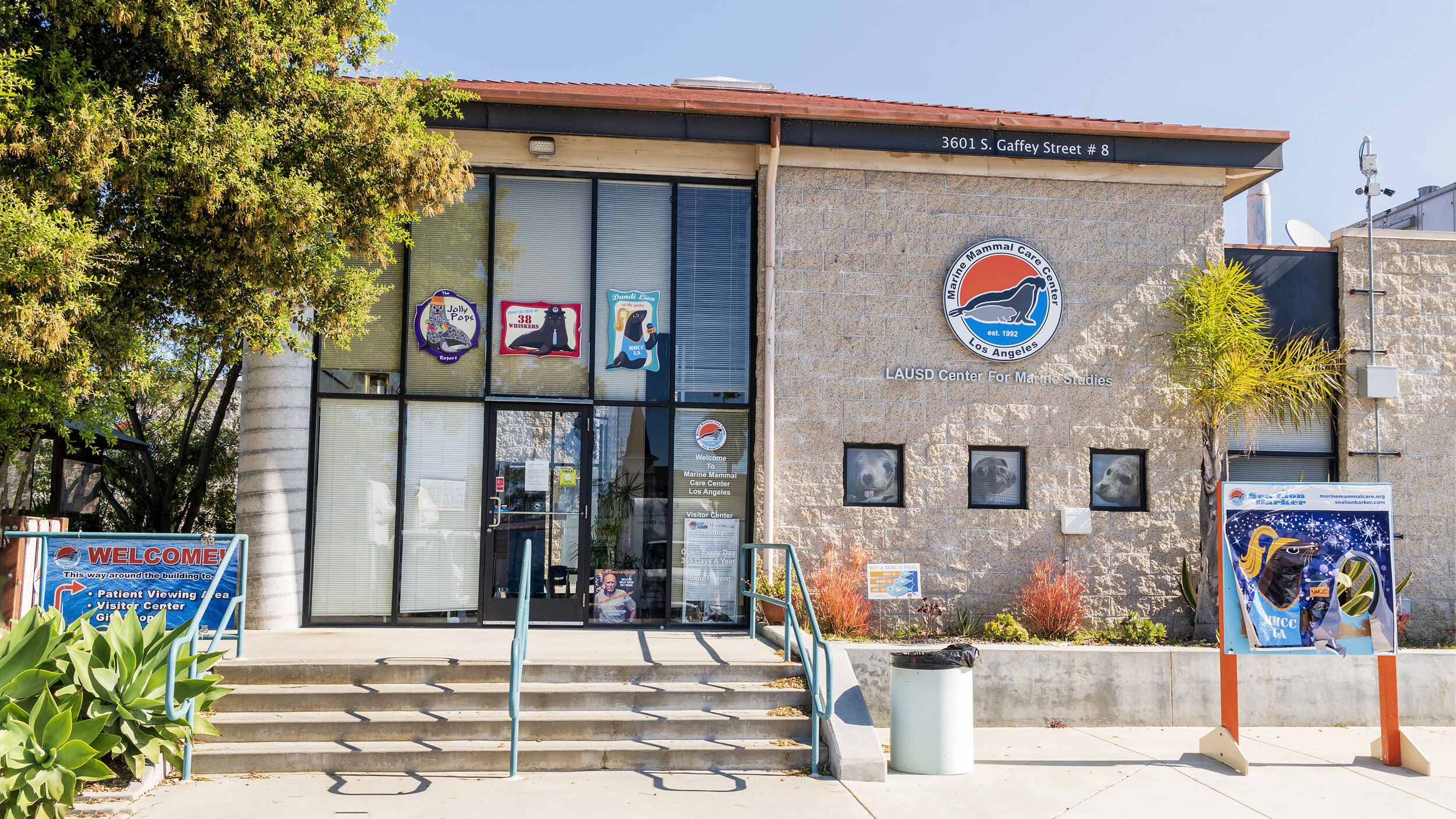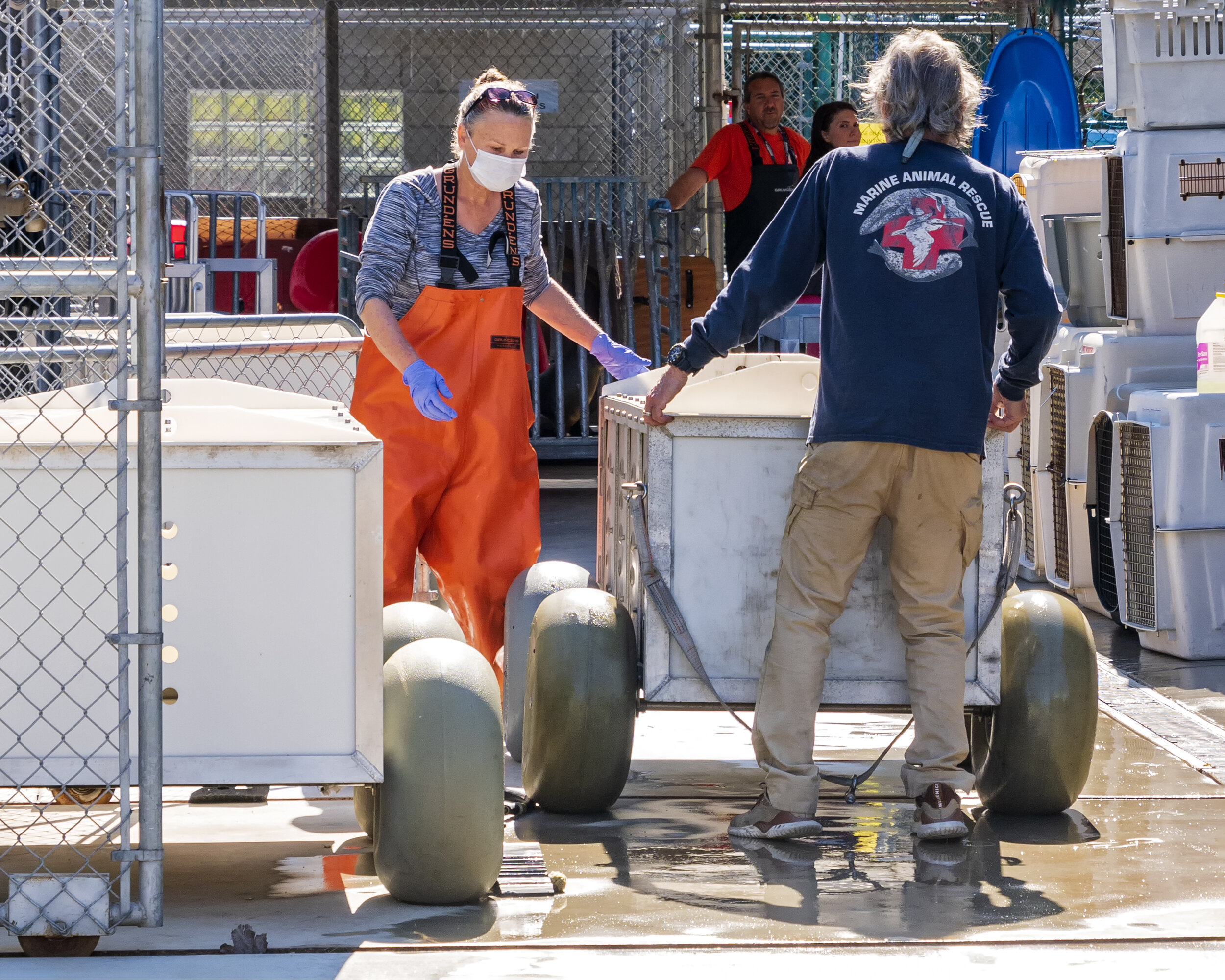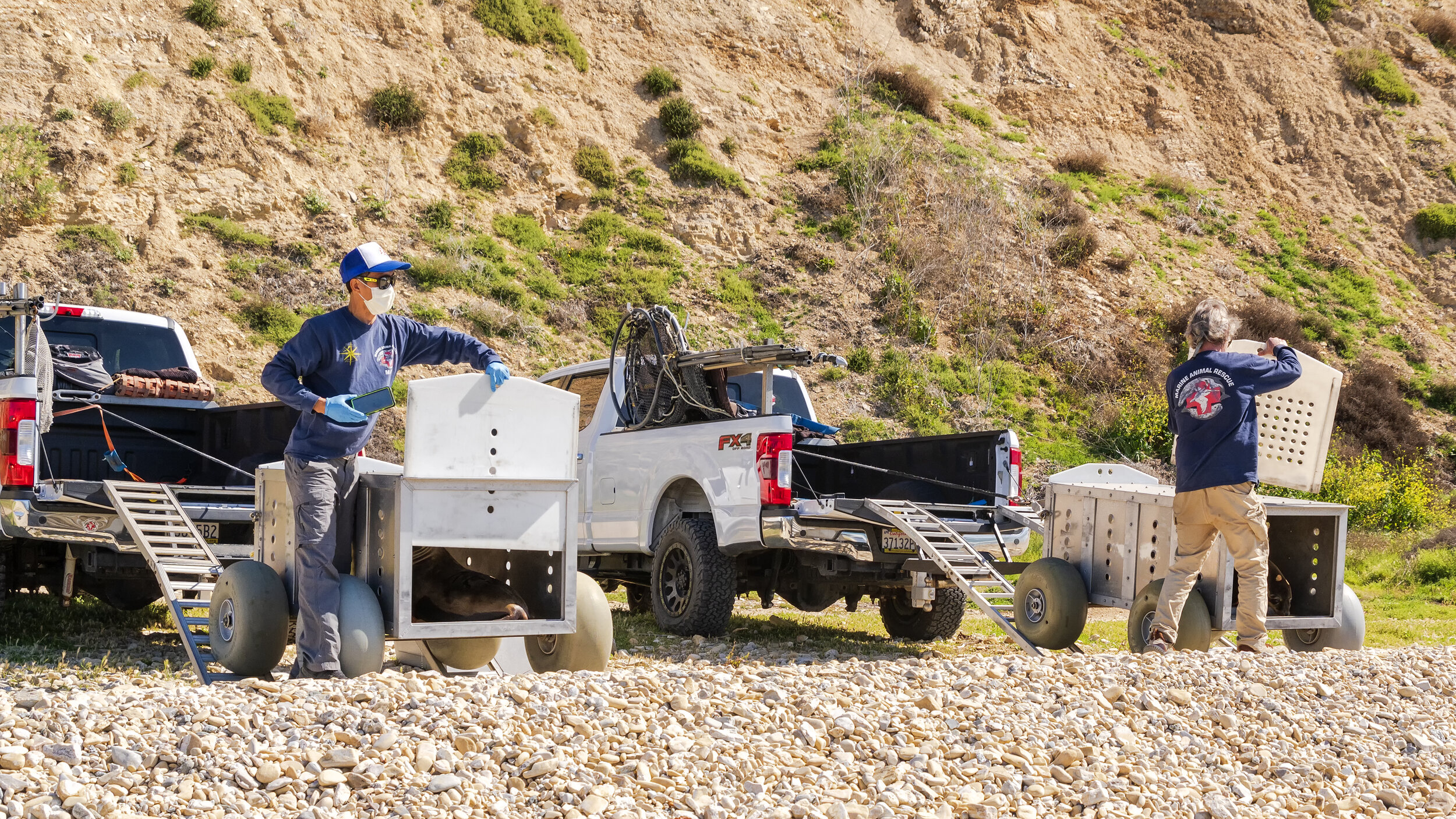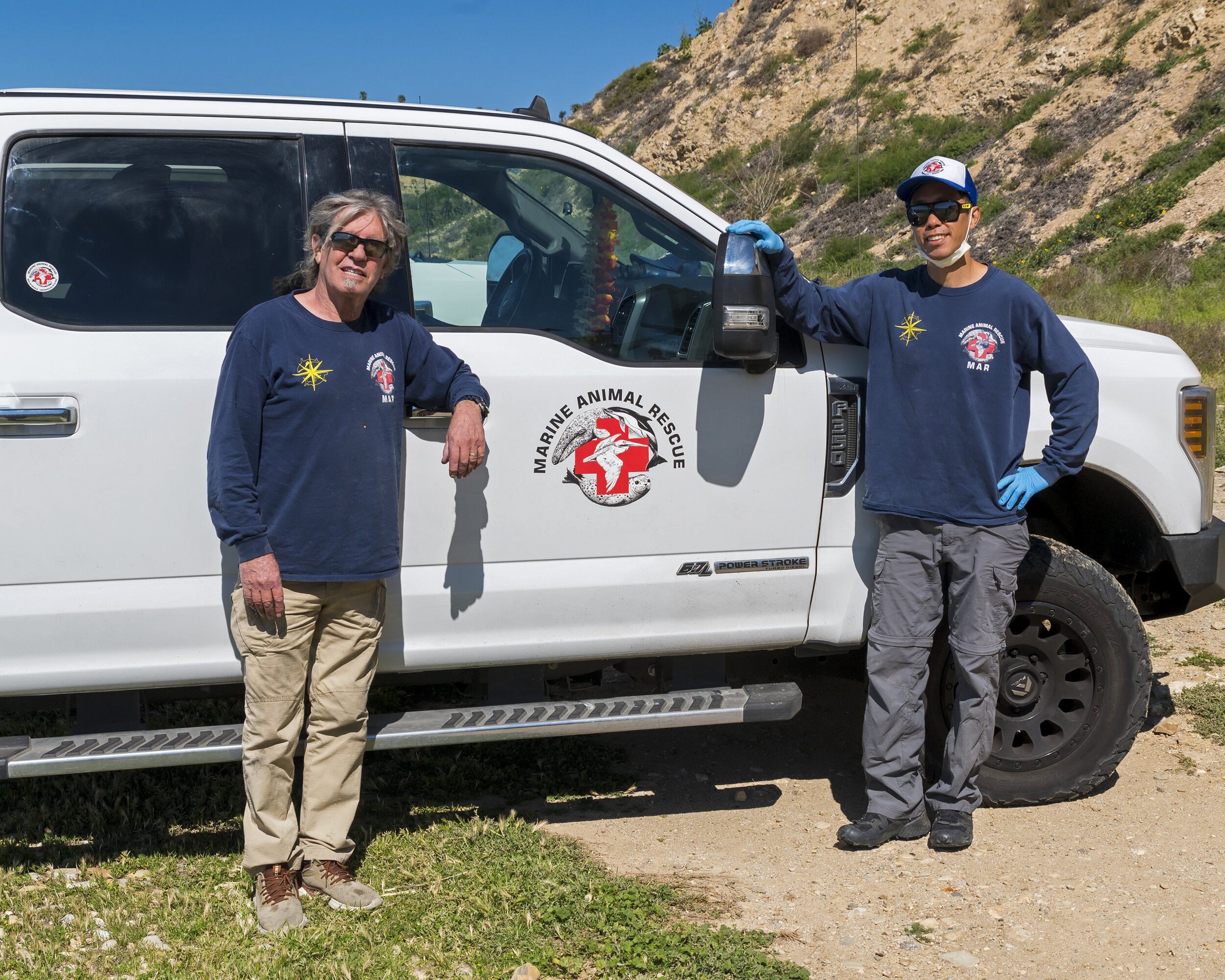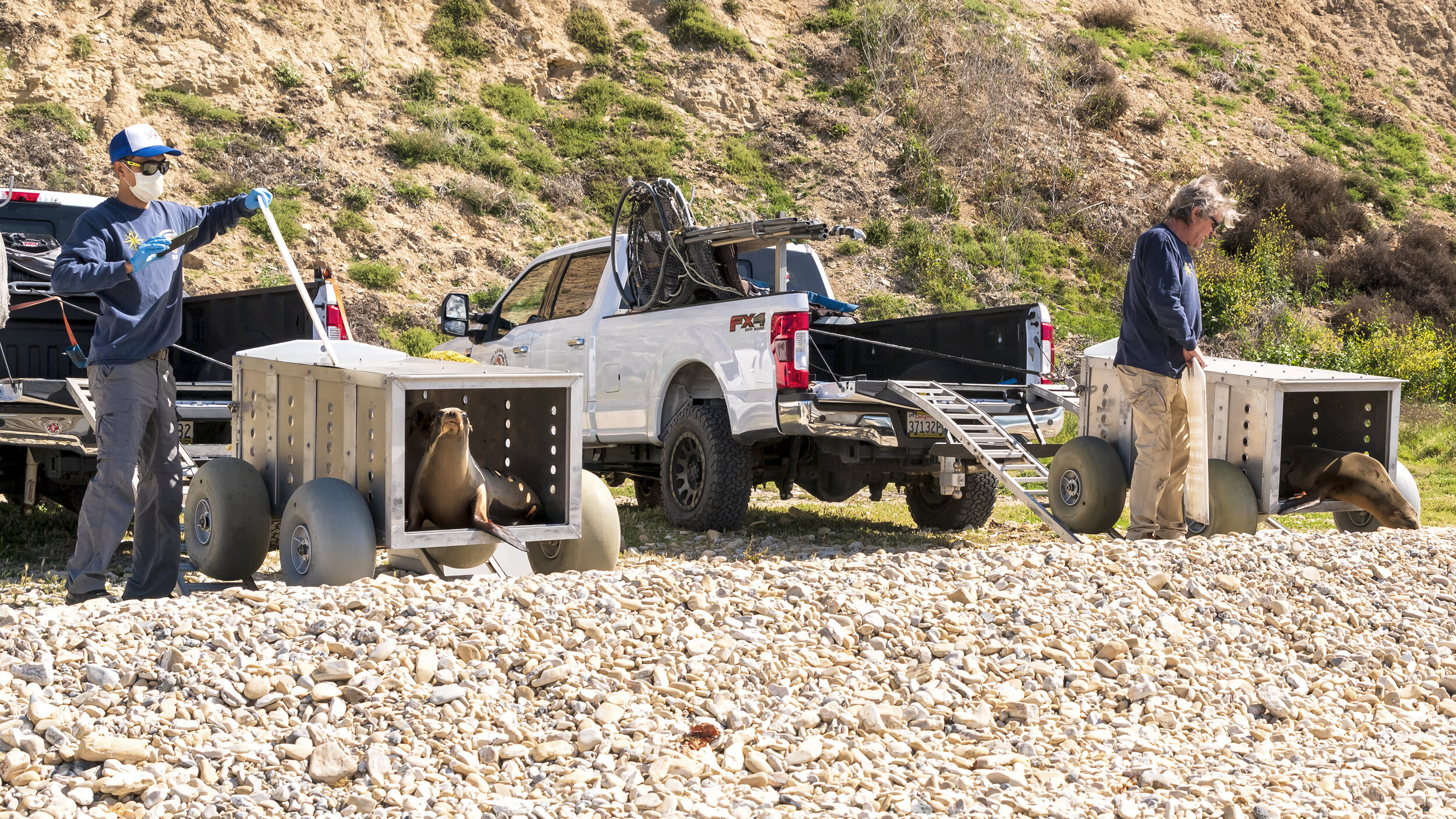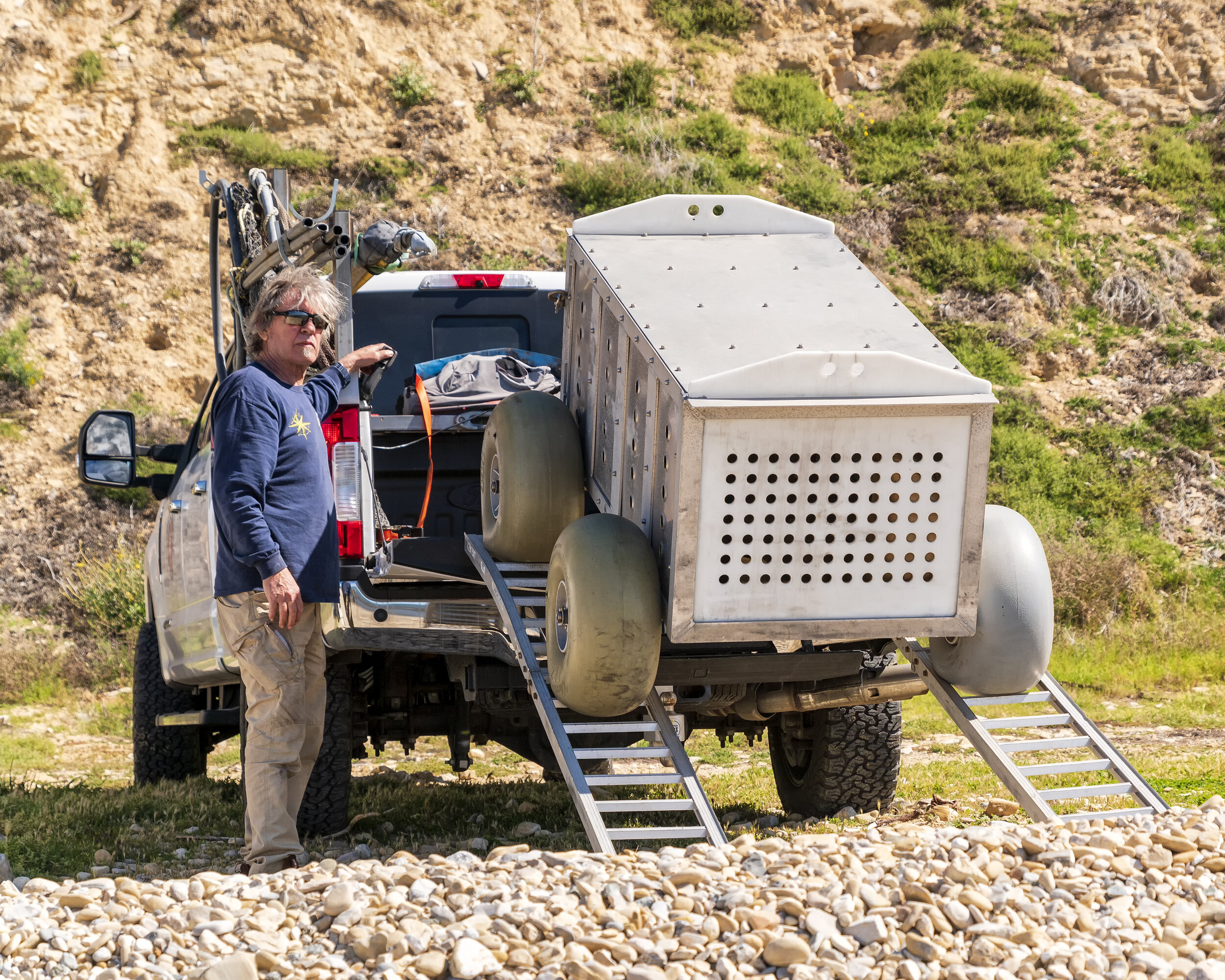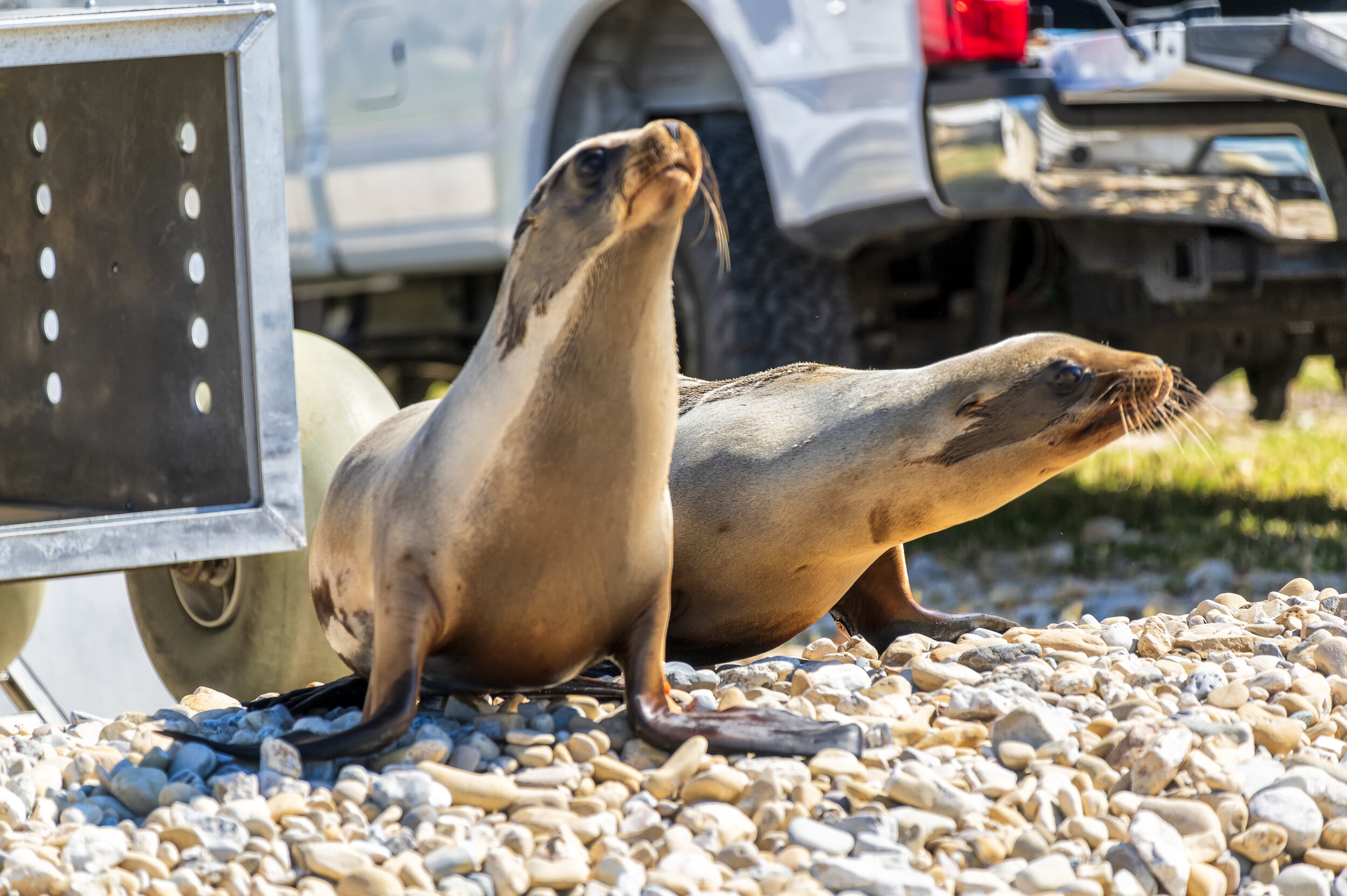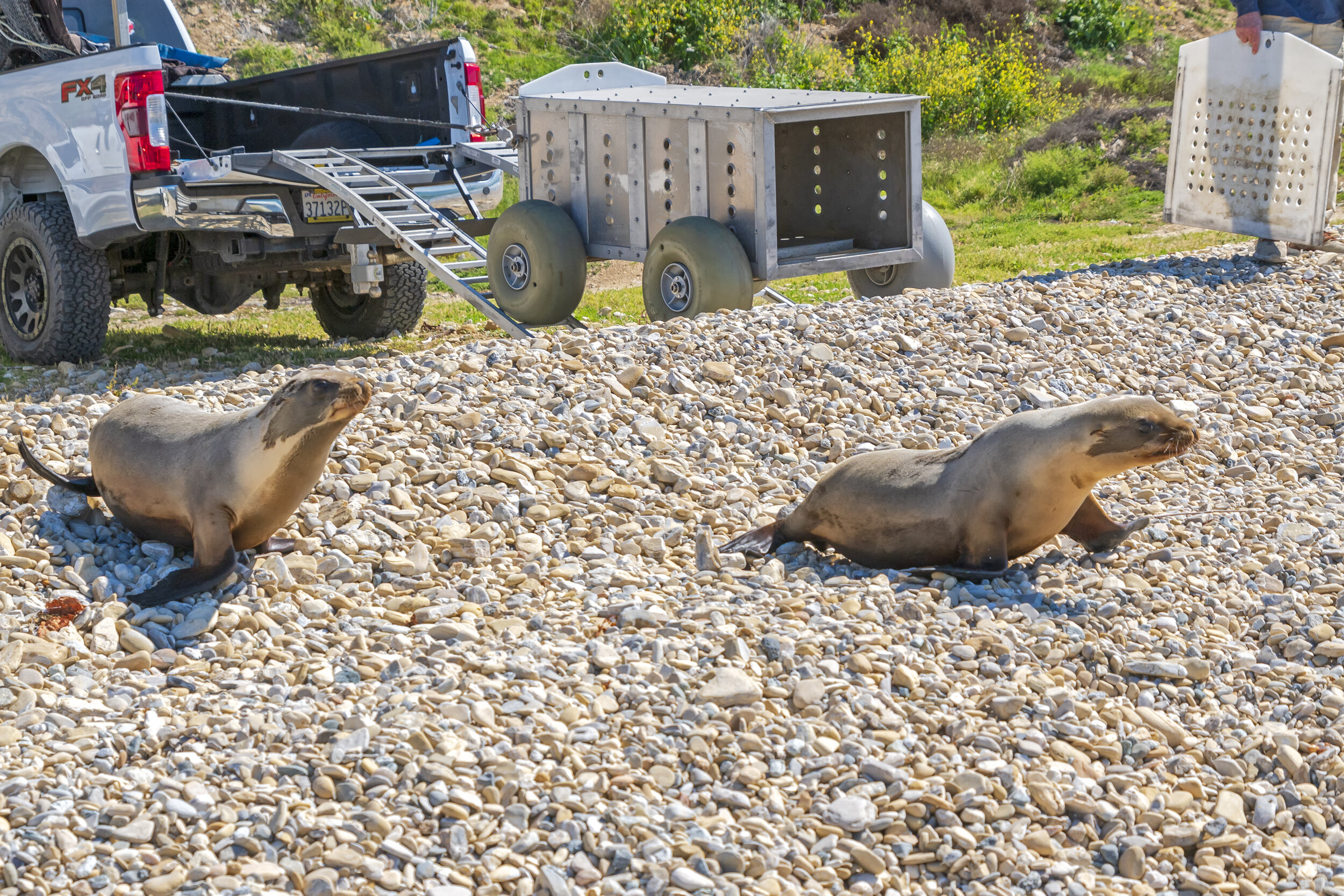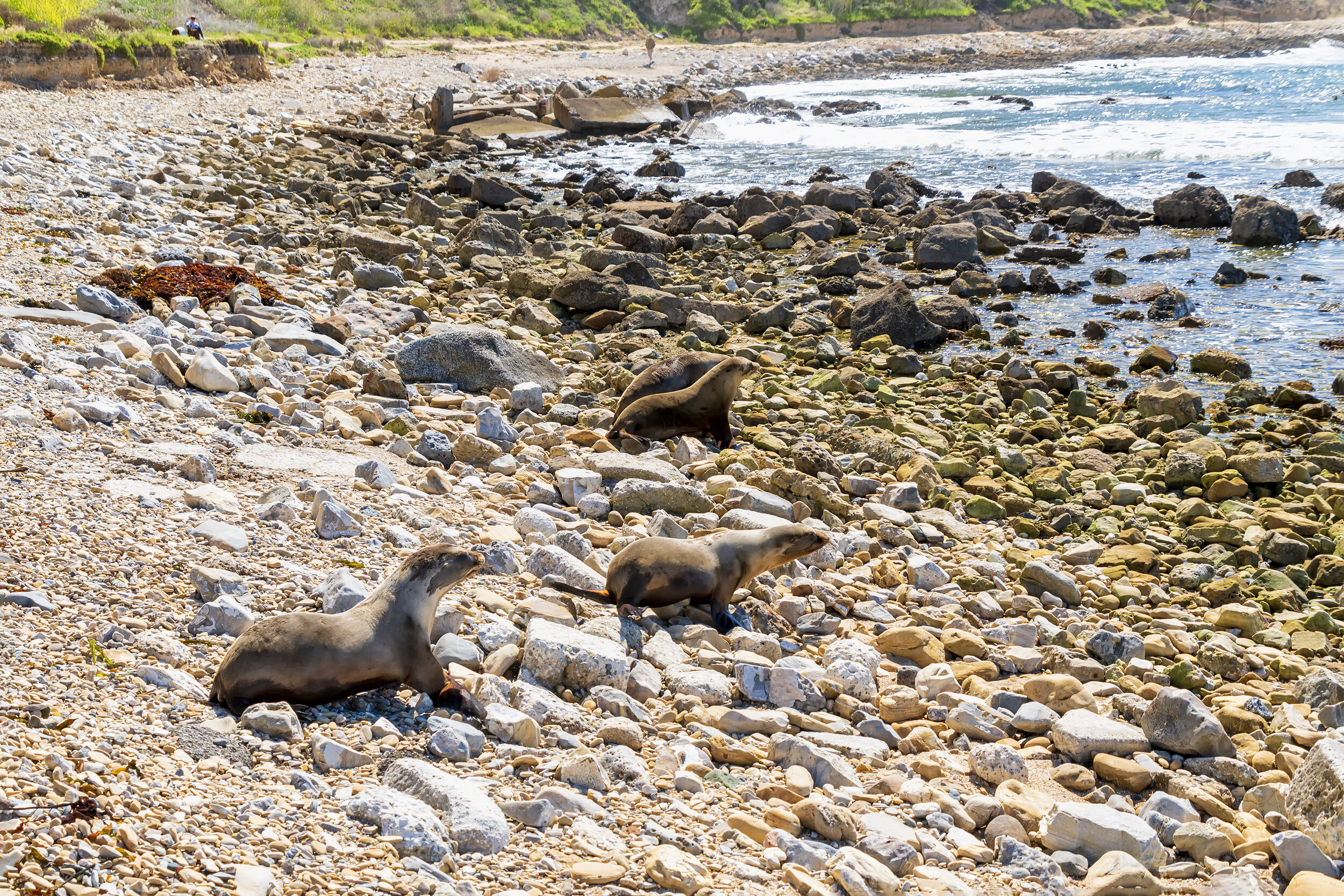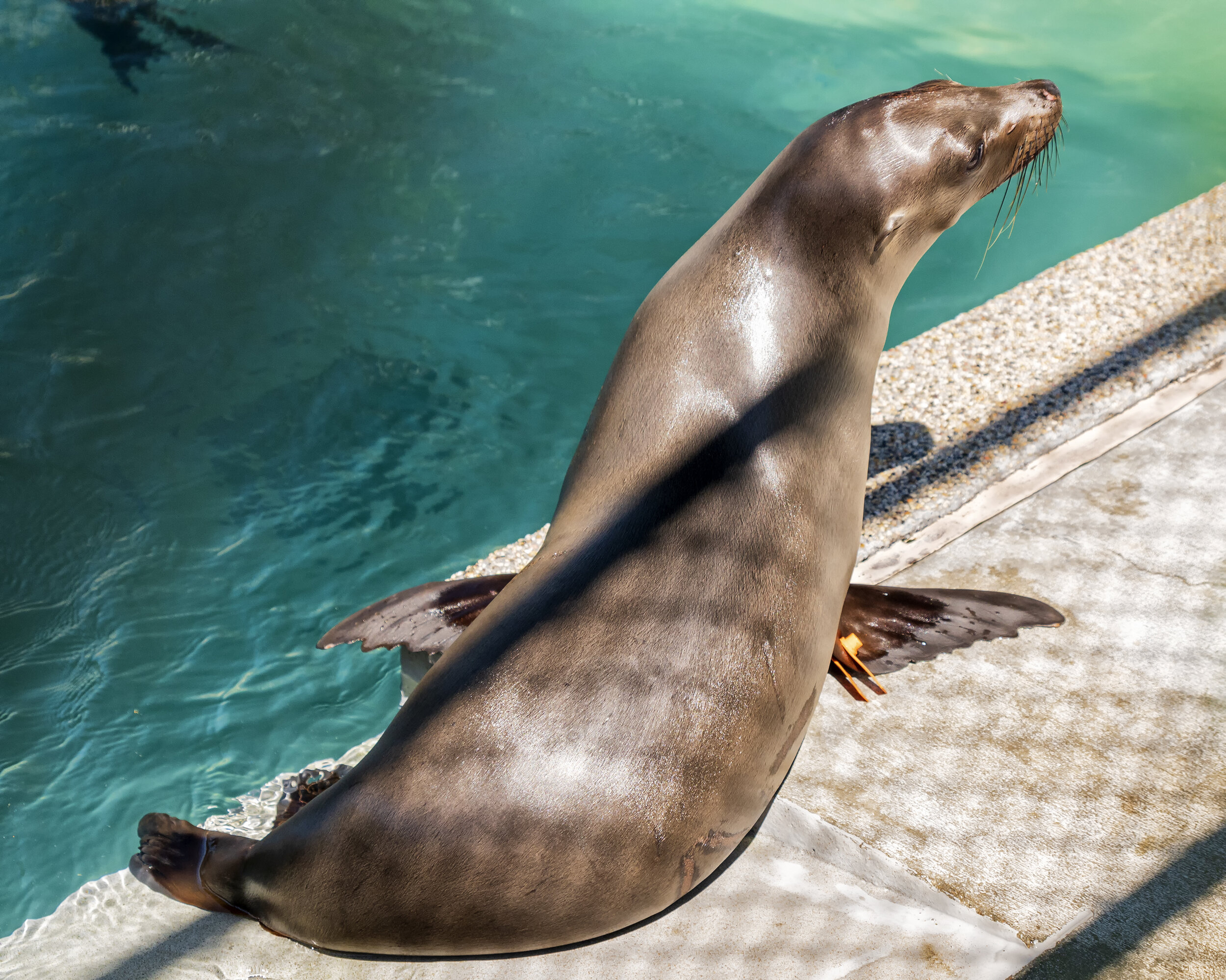Marine Mammal Care Center - Steve Tabor
Marine Mammal Care Center
- Steve Tabor
For over 27 years the Marine Mammal Care Center has cared for over 8,000 sick, stranded or injured seals, sea lions and elephant seals rescued along the coastline of Los Angeles County. The Care Center receives most of their patients from February to July. Animals are seen for injuries and illnesses which are often related to punctures and ingestion of fishing hooks, entanglements in fishing lines or nets, shark bites, ingesting plastic items, parasites, malnutrition, and even gunshot wounds.
Treating injured animals is a dangerous and difficult task. An adult sea lion can weigh as much as 800 pounds. Staff and volunteers are constantly reminded that these are sick or injured wild animals. Their mouths contain canine teeth and bacteria that can cause severe health issues to humans. As a result, precautions are taken every time staff members or volunteers work with the animals.
Seals, sea lions and elephant seals are mammals and as such treating their illnesses and injuries is very similar to treating humans. Wounds are treated with antibiotics for an infection. Severe wounds may require stitches. Parasites can cause pneumonia and intestinal and other digestive issues that require the use of medicines. Injuries and malnutrition can leave these animals unable to feed themselves, so staff members and volunteers must use a blender to prepare a mixture of fish and nutritional supplements that is force-fed to the animal by inserting a tube into their throat leading to their stomach.
Currently, the Care Center has an adult male sea lion that was admitted for a gunshot wound to the head. Upon examination, the medical staff learned that the animal was blind in both eyes, most likely from the wound. It appeared that there was no other additional neurological or physical damage. The staff declined to attempt surgery to remove the bullet from the sea lion’s brain. The staff nursed the sea lion back to full health, but with the loss of his eyesight, the staff knew he could not be returned to his aquatic home. They contacted a some zoos and aquariums to see if they would be willing to accept the sea lion to add to their collections. So far, the Care Center has not been able to find a permanent home for him, so he continues live in the pen with the largest pool in the facility that is use to create a social environment for recovering sea lions before they are released.
Many of the seal and sea lion pups that appear at the Care Center have been separated from their mothers before they have been weaned. In addition to addressing their nutritional needs, part of their treatment plans include teaching them how to survive in their ocean environment. Learning focuses on teaching the young pups how to catch fish and adapting them to their aquatic social environments. Sea lions are extremely social. They live in groups known as colonies. The large pool where the adult male sea lion kept is used for sea lions of various ages. It is here where the pups learn how to live in a colony with other sea lions. Seals live in very small groups known as pods or colonies. Prior to release seal pups also learn how to socially participate in a pod.
The goal of the Care Center is to return each animal to their natural environment whenever possible. For most releases the Care Center uses its staff members and volunteer corps. However, with the COVID-19 restrictions, the Care Center has enlisted the assistance of Marine Animal Rescue (MAR). Although, MAR primarily performs rescues of aquatic animals in Los Angeles County, they are willing to assist the Care Center for this task. According to MAR’s founder and president, Peter Wallerstein, “It’s an opportunity to see the process come full circle.”
On the day of the release, the animals are loaded into rolling containers that can be placed on a truck to be transported to a local beach. Due to its proximity, Royal Palms Beach in San Pedro is often used. Once the vehicles reach the beach, the carts are carefully lowered, and the gates of the containers are opened. Sometimes, it takes a couple of minutes for the animals to realize where they are, but eventually they stick their heads out of the container and begin to head towards the water. According to Mr. Wallerstein and Care Center Director of Hospital Operations, Dr. Lauren Palmer, it does not take very long for the animals to reach the surf and head off. But, they both recall a case where it took one male sea lion about three days to leave beach before returning to water.
Ms. Amber Becerra, President of the Board of Directors for the Care Center, states that the Care Center is also a part of the Oiled Wildlife Care Network (OWCN) in California. In case of an oil spill along coastlines of Los Angeles or Ventura Counties, the Care Center would be involved in the operation of washing, stabilizing and care for any marine mammal exposed to the spill.
In addition to its animal rescue program, the Care Center maintains an educational program. The Care Center’s a marine education program is open to schools in the Los Angeles Unified School District (LAUSD). In addition, its mobile labs bring marine education to local groups that cannot visit the Care Center.
History of MMCC
The Care Center was originally a part of Marineland, an aquatic amusement park, located on the Palos Verdes Peninsula on the property where Terranea Resort is found. The Care Center was originally staffed by Marinelanders and a small cadre of volunteers. In late 1986, Harcourt, Brace and Jovanovich (HBJ), primarily a school textbook publisher, purchased Marineland’s real and animal properties. HBJ previously had acquired of all of the Sea World holdings in the United States. In short time, HBJ closed Marineland and sent most of its animals to Sea World in San Diego.
Arrangements were made between HBJ and the Los Angeles Unified School District to build a permanent home for the Care Center at Angel’s Gate Park on part of the former Fort MacArthur property. However, prior to completion of the construction, the Care Center established temporary facilities at Dockweiler Beach in Playa Del Rey. In 1991, the Care Center returned to the Marineland property and remained there until the new location finished construction. It opened at its present location in October 1992.
A Troubled Future
Until now, the Care Center finances have depended upon an endowment along with significant donations from individual donors, local corporations such as the Torrance Refinery and Marathon Petroleum, grants from varies foundations and monies from the budget of the State of California. Smaller individual donations, memberships, and gift shop sales have supplemented the budget. However, in the coming year the endowment has been reduced to point where it can no longer assist with supporting the Care Center.
Ms. Becerra has been recently appointed a President of the Board of Directors for the Care Center. She along with other Board members realized without incorporating significant budget reductions along with a robust fundraising program, the Care Center would be forced to close its doors. One of the first orders of business was review operating costs. Among the necessary budget cuts came in the form of staff reductions. Currently, the Care Center staffing consists of only 11 full-time staff members. Among those include a Director of Hospital Operations, Husbandry Manager, Docent Liaison, Programs Manager, Executive Assistant, Veterinary Tech and support staff. Ms. Becerra is quick to point out that the Care Center could not operate without its corps of 200 volunteers.
In addition to budget reductions, the Board has engaged in a major funding raising effort to secure the $1 million dollars necessary to continue the Care Center’s operation in the coming budget year. Becerra points out that the Care Center has secured some funding from existing grants and supporters. The State continues to support the Care Center, but their funding is split among the other marine mammal rescue centers in the state. The Care Center state funding varies from year and ranges between $100,000 and $200,000. So far, the Care Center’s fundraising efforts have generated approximately $850,000.
However, COVID-19 virus restrictions could not have come a worse time for the Care Center. Due to “social distancing” and restrictions on business operations, many of the organized fundraising efforts for the Care Center have had to be indefinitely postponed. Ms. Becerra and the other board members continue their outreach efforts to corporate sponsors and potential grant sources. But, the impact of the COVID-19 crisis has slowed those responses. The financial contributions from gift shop sales and individual donations have all but halted. Ms. Becerra and Dr. Palmer stress individual donations do accumulate and can make a difference in keeping the Care Center in operation. They know that at this time there are many individuals and families that are struggling financially and donating to the Care Center may not be possible. To make donations a bit easier, the Care Center has been added to the Amazon Smile list under the name of “Marine Mammal Care Center Los Angeles.” Even though you may not be able to make a direct donation, by enrolling in the Amazon Smile program, by making everyday purchases an individual can also make a donation to assist the Care Center maintain its operation.
Though time is running short, there is still time to raise the necessary funds, Ms. Becerra and her Board members are looking towards the future with a hopeful eye.
Visiting the Center
The Care Center is currently closed to visitors due to COVID-19 restrictions. The Care Center is located at 3601 S. Gaffey Street in San Pedro. Following the lifting of the COVID-19 restrictions, the Care Center will open daily during 10:00 a.m. to 4:00 p.m. seven days a week.
Steve Tabor Bio
This South Bay native’s photographic journey began after receiving his first 35 mm film camera upon earning his Bachelor of Arts degree. Steve began with photographing coastal landscapes and marine life. As a classroom teacher he used photography to share the world and his experiences with his students. Steve has expanded his photographic talents to include portraits and group photography, special event photography as well as live performance and athletics. Steve serves as a volunteer ranger for the Catalina Island Conservancy and uses this opportunity to document the flora and fauna of the island’s interior as well as photograph special events and activities.
Watch for Steve Tabor Images on the worldwide web.


